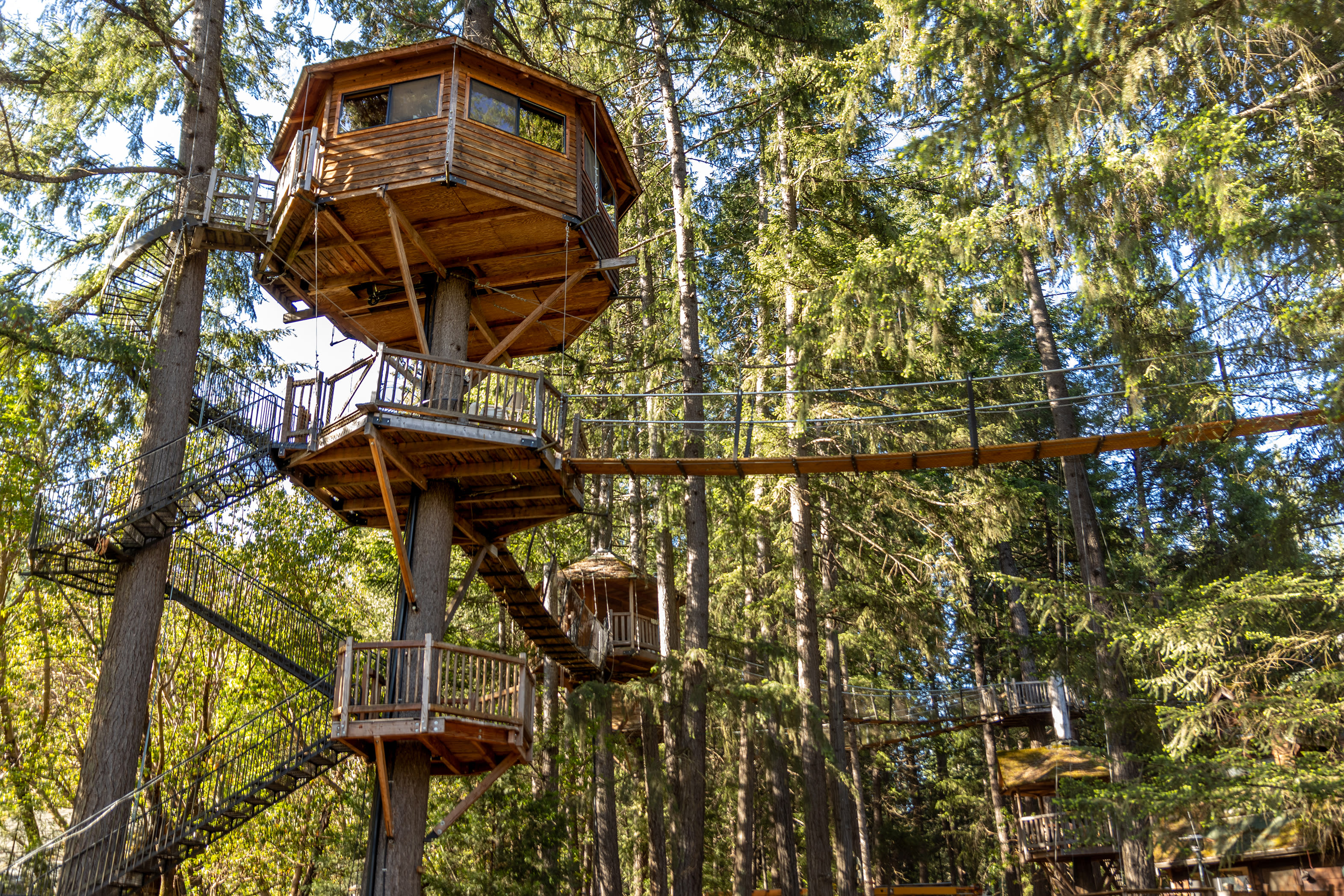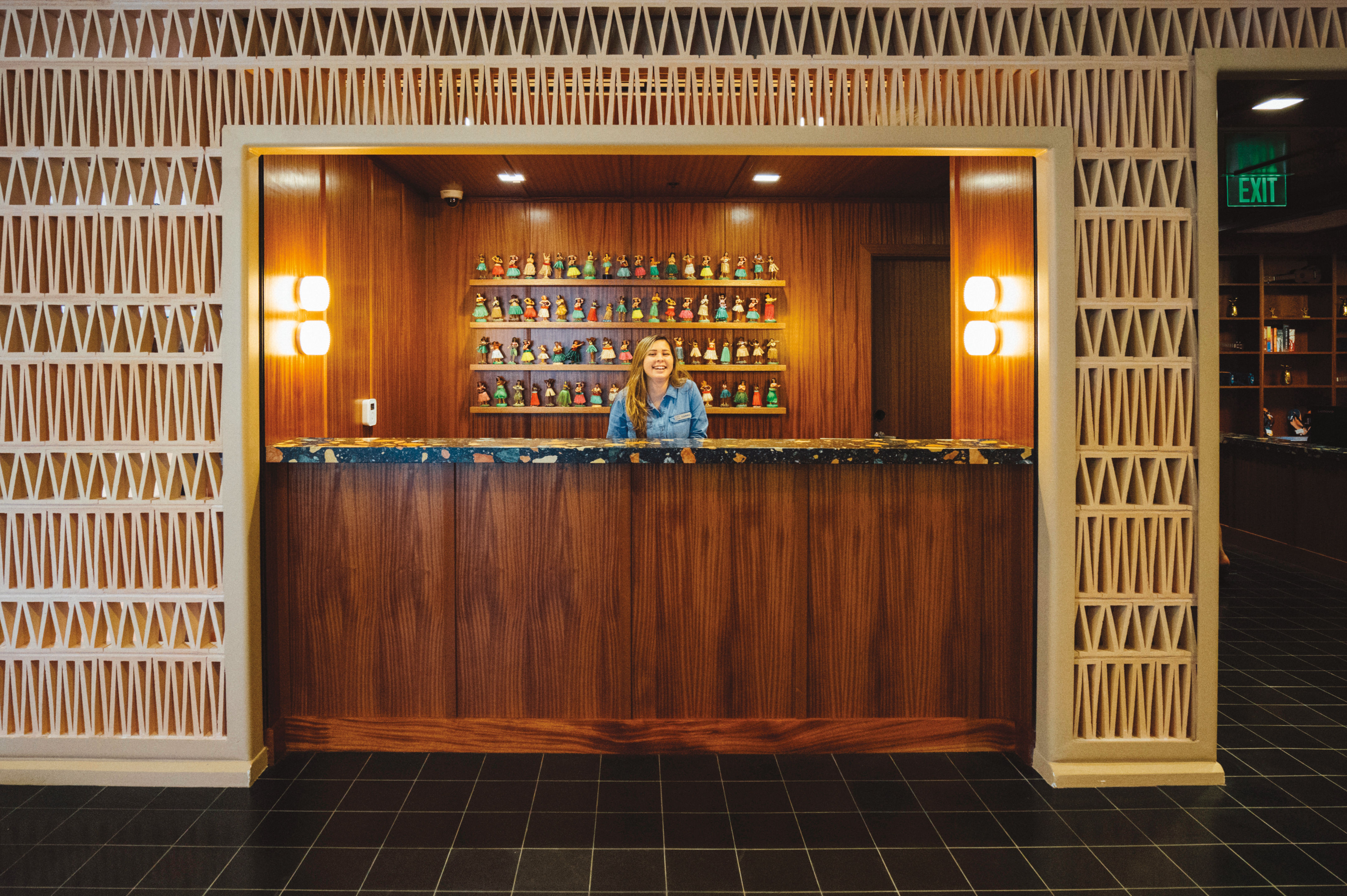
A Portland Design Team Goes Full Hula Girl on a Hawaii Hotel
Imagine you’re in Hawaii. You’re drinking a cocktail called a “Mai Taime,” conjured at a bar called the Hideout, while looking at a wall of colorful vintage hula girl figurines.
Have you discovered the knife-edge border between kitschy-fun and kitschy-dumb? Or just a tropical paradise you may never leave, at least psychologically?
The Laylow, a Marriott hotel that opened this spring in a renovated 1969 building on Honolulu’s up-and-coming Kuhio Avenue, does indeed look more Hawaiian than Hawaii itself. With branding and interior design by the Portland creative firm OMFGCo, the Laylow shimmers with an aura of midcentury, jet-set island fantasy. Palm-lined common spaces shelter behind honeycombs of terra-cotta breeze-block. A slim art deco sans serif font adorns the signage and stationery. Custom wallpaper evokes dreamy tropicalia.
In conception and detail, the design intends to tell the story of that one time you were in Honolulu—a story set, perhaps, in a pleasant touristic time warp, fully today in amenity but throwback in vibe to when travel was less banal. And if the Laylow succeeds in weaving that tale, it may be due to the saga of its own creation.
OMFGCo—the Official Manufacturing Company—has made and remade many places since Jeremy Pelley and Fritz Mesenbrink founded the branding and design house in 2009. Pelley’s prior résumé includes Portland’s influential Ace Hotel outpost; together, the pair designed (and DIY-built) the expansive sports bar Spirit of ’77 and revised horse racetrack Portland Meadows to emphasize its retro appeal. Recently, the 17-person firm based at the Burnside Bridge’s east end devised branding and an art strategy for a hotel even farther away—in Tokyo.
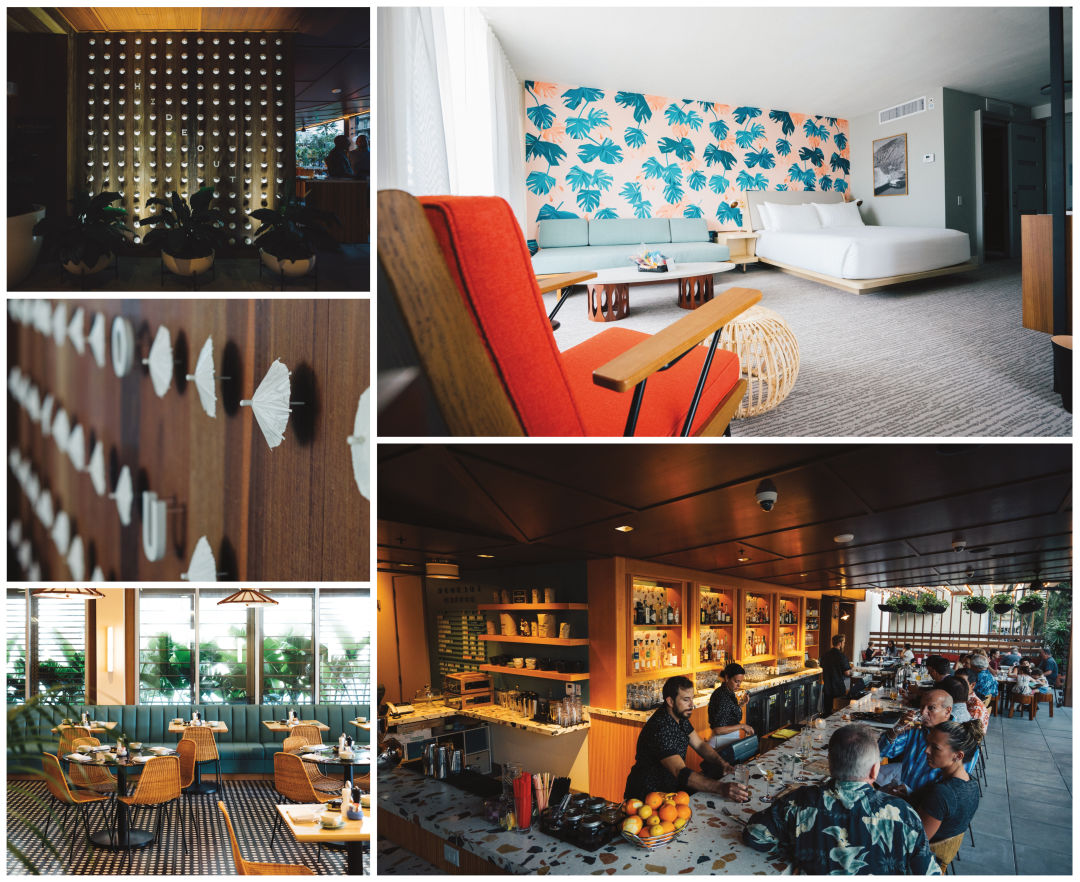
OMFGCo’s outlook on guest room design (top right) started the firm’s all-in project.
Image: Courtesy OMFGCo
Even so, the Marriott job offered new and particular challenges. The aging high-rise in the dense Waikiki neighborhood stands at slight remove from the beach and Waikiki’s ample glitz. (Kuhio Avenue runs a block off the upscale shopping drag Kalakaua, domain of high-end and placeless luxury brands like Yves Saint Laurent, Gucci, Tiffany, and Bottega Veneta.) The hotel developer, Rockbridge, hired OMFGCo to craft an identity that could hold its own in a fervently contested market.
The Portlanders surveyed the scene.
“When you go to Hawaii, you think of the beach,” Pelley says. “How do we compete with that?”
“We were surprised by the hotel landscape there,” Mesenbrink adds. “Everything was either old, colonial era, and establishment, like the Royal Hawaiian, or newer and more modern but not very Hawaiian. A lot of places feel like they could be in Miami Beach.”
They found Honolulu’s most noteworthy architectural style languishing. “Marriott’s building was built at the height of midcentury modern,” Pelley says, “and not just midcentury modern but Hawaiian midcentury modern.”
“You see all this amazing breeze-block and great signs,” Mesenbrink adds. “But you don’t see places that have updated that look and brought it into today.”
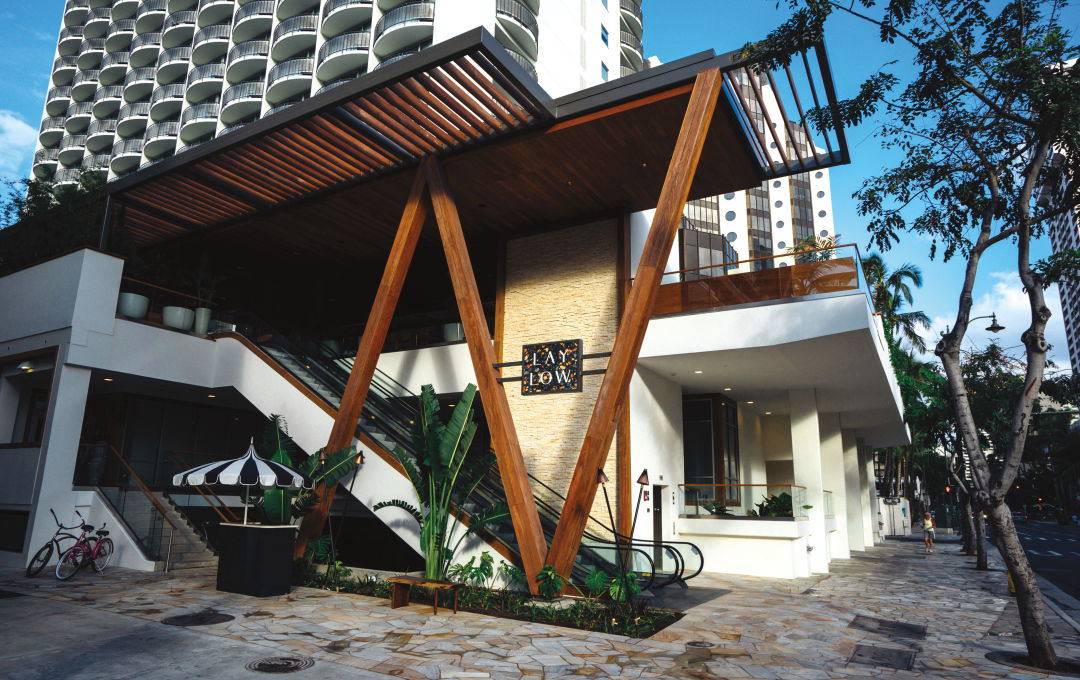
The Laylow sits on Kuhio Avenue, a fast-changing Honolulu street.
Image: Courtesy OMFGCo
OMFGCo proposed two possible branding and marketing strategies: presenting the hotel as a tropical urban oasis; or emphasizing a distinctively Hawaiian midcentury feel to match the building’s age. The client heard them out—and wanted both. Then Rockbridge asked the designers to review a model of the basic room design, which an interior design firm had already completed.
“It was just ‘contemporary hotel,’” Mesenbrink recalls. “It didn’t feel midcentury. It didn’t feel Hawaiian. We said, ‘Well, if it were up to us, we would change everything.’
“They came back a couple weeks later and said, ‘We agree, but the designer who worked on this is booked out now, and doesn’t want to revisit it. Can you take this on?’”
While the firm had honed its environmental design chops, a 200-plus-room hotel represented a huge leap in scale. “We knew the things that needed to be done, but not the things within the things,” Mesenbrink says. “And they were starting demo a week after we had this meeting.”
The next 18 months unfolded as a crash-course in Hawaiian design culture, materials, and technicalities. The OMFGCo team immersed itself in the work of Vladimir Ossipoff, a Vladivostok-born architect who defined Hawaii’s midcentury architecture with iconic work like Honolulu’s mod IBM Building and the Liljestrand House, a balmy breeze of residential design from 1952. More prosaically, they grappled with local building codes. Their room design scheme demanded custom drawer pulls; a shifting cast of designers worked on signature postcards, original wallpaper, and the like.
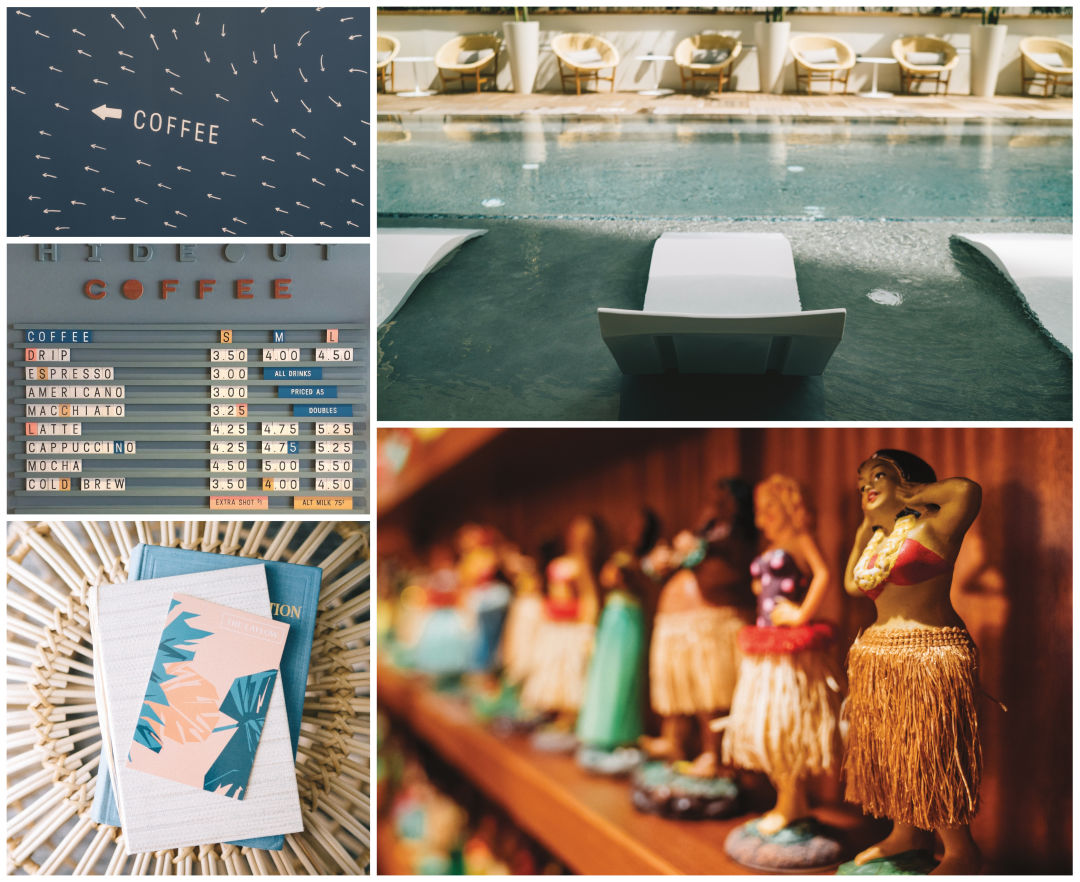
OMFGCo’s designers worked on signage and stationery (bottom left) as well as spaces.
Image: Courtesy OMFGCo
“You get into things like, what should the baseboard look like?” Mesenbrink says. “Multiply that by every room.”
The Portland team meanwhile spent 90 percent of the project’s development trying to hit on a hotel name with just the right cultural resonance. “There was a lot to learn about what would be appropriate and appealing to people in Honolulu,” Mesenbrink recalls. “Every hotel now wants to cultivate a local audience.”
Of course, any ambitious 21st-century hostelry is ultimately a semifictional distillation of where it is. When that place is Waikiki, the audience has its expectations. “A lei greeting, hula dancers, tiki,” Mesenbrink reflects. “Whatever we think about Hawaii may be a stereotype, but you kind of want to have a big mai tai when you get there.”
And so those figurines dance, for the foreseeable future, as a welcoming backdrop to the Laylow’s front desk. “The hula dancers are the cliché of what you brought back from Hawaii,” Pelley says. “But if you put 70 in one place, it becomes a statement.”



